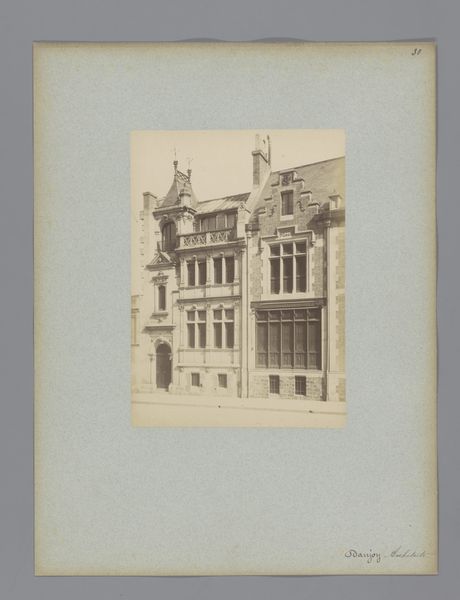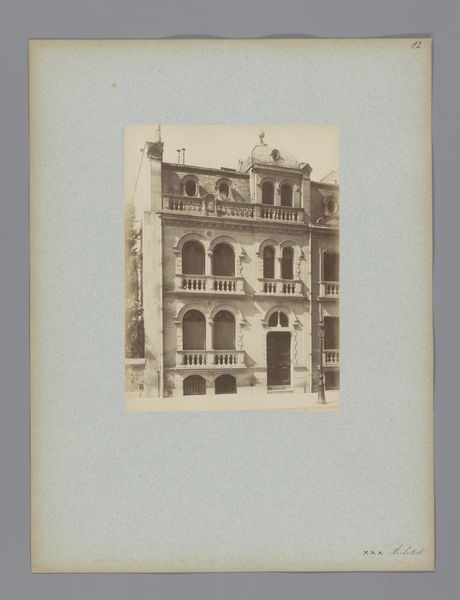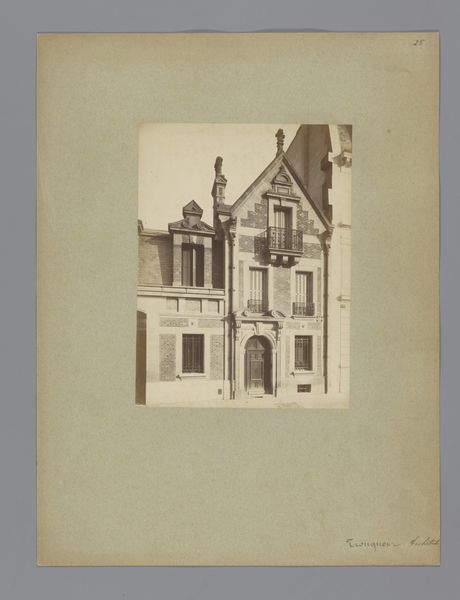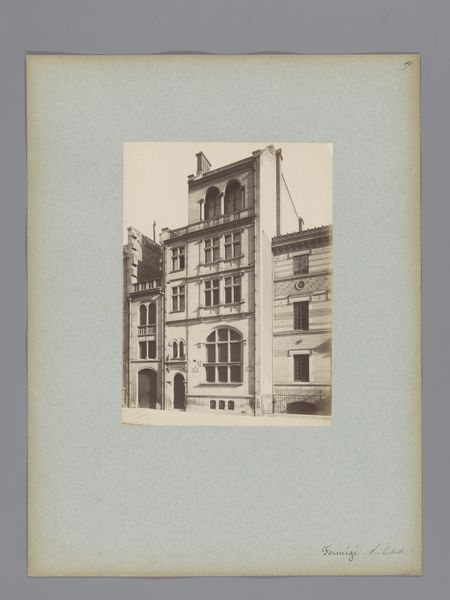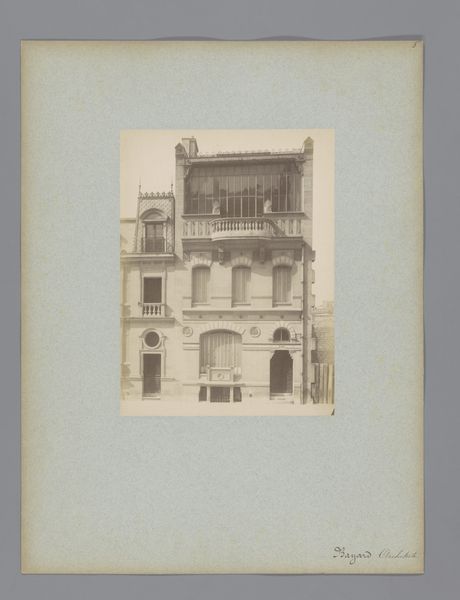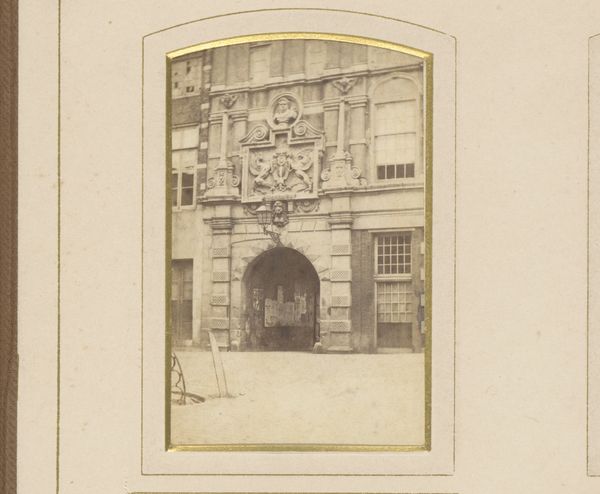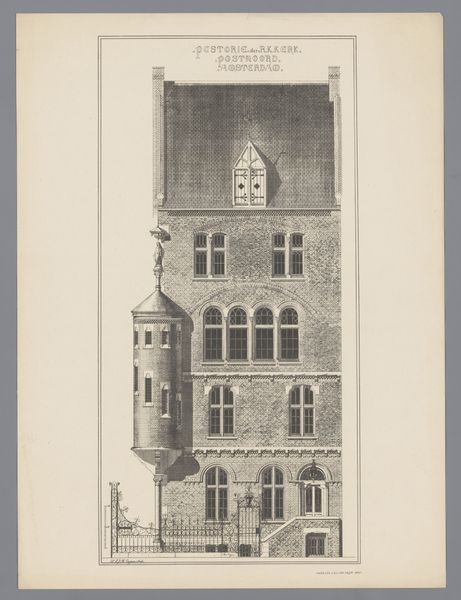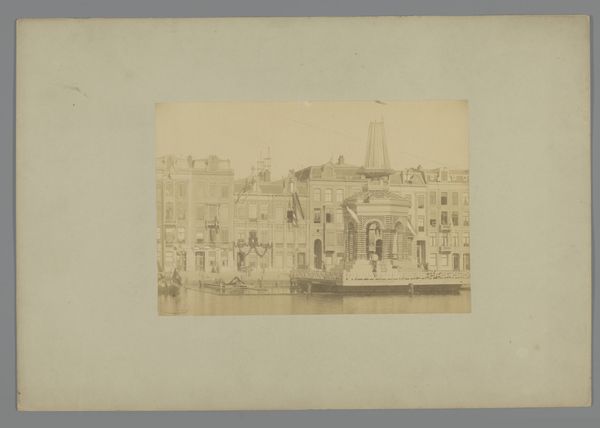
photography
#
photography
#
cityscape
#
building
Dimensions: height 223 mm, width 165 mm
Copyright: Rijks Museum: Open Domain
Editor: So, this photograph, "Facade of a Villa in Paris, designed by Auguste-Joseph Magne," taken before 1880 by Lampué et Cie… it has this real, old-world charm, and the detail on the building is lovely. What really strikes me, though, is the context around this architectural display - the materials used to achieve this design and structure. What are your thoughts when you look at it? Curator: My eyes are immediately drawn to the labor and the raw materials inherent in this photograph, think about the origins and manufacturing of these resources! Consider the stone that built the facade and its transport to the site - imagine the quarrymen, the masons, and other laborers involved. Can you feel the consumption implicit in its creation? Editor: Yes, absolutely. The photograph almost hides that. It feels... refined, bourgeois. But it's easy to forget the intense labour that went into achieving that finished "look". Do you think photography, at the time, had any role in shaping our perception of labour, or architecture for that matter? Curator: It definitely played a part. The ease with which a photograph could capture such a complex facade, the ease in spreading architecture's reputation contrasts starkly with the monumental effort required to construct the villa itself. The image obscures the complex networks of labor, commerce, and consumption necessary to bring this structure to life. Think about the availability and production of photographic materials, too. Editor: So the photo, ironically, becomes this tool that separates us from the physical reality of creating something. That is fascinating. Curator: Precisely. Considering the materials – both in the photograph and of the actual facade itself, allows us to explore the broader social and economic forces at play in late 19th-century Paris. Editor: This gives me a new angle of thinking about photography in terms of material! Thanks. Curator: A materialist perspective can change how we appreciate architecture.
Comments
No comments
Be the first to comment and join the conversation on the ultimate creative platform.



